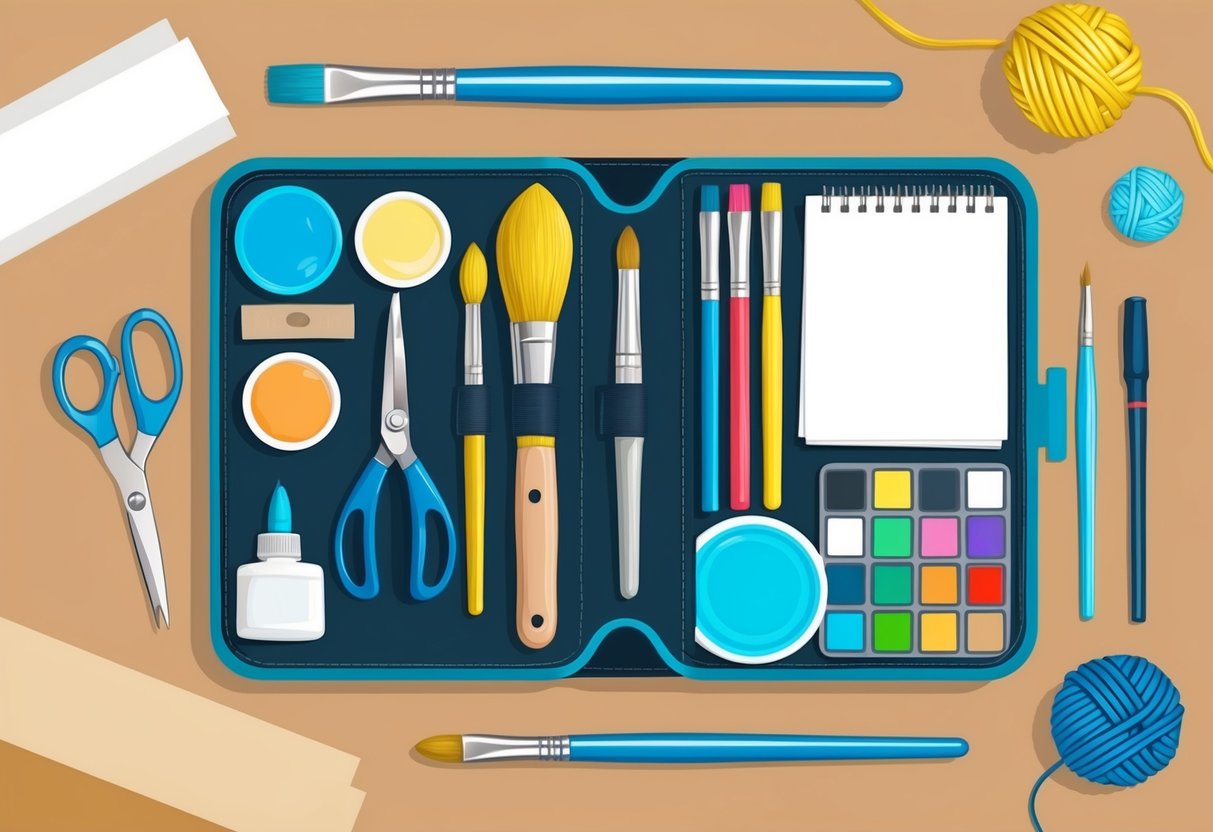
Chisels for Carving
Chisels are crucial for woodworking and carving projects. They come in a range of blade shapes and widths, such as straight, gouge, or V-shaped, each serving a different function when sculpting or detailing wood, leather, or even clay.
A sturdy grip and high-quality steel blade help achieve consistent control and cleaner cuts. Chisels can be used for smoothing surfaces, creating grooves or textures, and shaping joints in furniture making.
Keeping the tip sharp is necessary to avoid splintering or rough edges. Using a mallet with chisels enables crafters to apply steady, controlled force.
Safety should be prioritized, so a non-slip handle and a steady work surface are essential. Proper storage in a protective roll or box prevents accidental nicks and maintains blade integrity over time.
Cordless Drill for Versatility
A cordless drill is a versatile powerhouse in any crafter’s toolkit, often found in woodworking, jewelry making, or home décor projects. Its portability allows users to drill holes, insert screws, or sand surfaces without being tethered to an outlet.
The variable speed and torque settings offer control for different materials, from wood and plastic to metal or even stone. Many models feature a keyless chuck for fast bit changes and ergonomic grips for comfort during prolonged use.
For added flexibility, a cordless drill can also be paired with polishing, grinding, or brush attachments, expanding its applications in various crafts. Using a cordless drill reduces project time and increases accuracy compared to hand tools.
Battery life, charging times, and available attachments should be considered when choosing one for craft needs. For more guidance on essential power tools, visit this comprehensive craft tool guide.
Storage Solutions and Organization
Keeping craft materials organized not only saves time but also helps prevent supplies from getting lost or damaged. Effective storage solutions make it easy to find and access everything when starting a new project.
Organizing Craft Materials
Proper organization starts with sorting supplies by type or project. Many crafters use clear plastic bins, stackable drawers, and labeled containers to store large items like paper, fabric, or yarn.
Using shelving units or tiered carts keeps tools visible and within reach, which encourages regular use and helps maintain order. Some experts recommend categorizing craft items based on the activity or tool type.
For example, grouping all painting supplies together, while storing cutting tools like scissors and craft knives in a single section. Baskets, jars, and desktop organizers can further streamline the process, making it easier to locate materials quickly.
Organizing craft supplies is more effective when “like items” stay together and are visible at a glance.
Storage for Small Supplies
Small items such as beads, buttons, pins, and fasteners can become cluttered or lost if not stored properly. Divided containers like pill boxes, ice cube trays, or compartmentalized boxes work well for sorting tiny objects.
These storage solutions make individual items easy to identify and keep separate from one another. Drawer dividers, cutlery trays, and small jars are also practical options for keeping miniature tools and embellishments organized.
A simple table compares common solutions:
| Storage Solution | Best Use |
|---|---|
| Pill organizer | Beads, sequins, small findings |
| Ice cube tray | Buttons, pins, tiny embellishments |
| Cutlery tray | Scissors, pens, adhesives |
| Glass jar | Ribbons, washi tape, markers |
Keeping small supplies in designated spaces reduces mess and makes crafting sessions more efficient. For more creative ideas, check out storage strategies for tiny craft materials.
Frequently Asked Questions
Beginners often wonder which craft materials to prioritize, how to choose the right quality, and what to include in a starter kit. Organization is also important, especially for adults and preschool environments aiming for efficiency and safety.
What are the basic craft supplies recommended for a beginner?
A beginner should start with a reliable set of scissors, a cutting mat, and an assortment of glues and adhesives. Paper, cardstock, a ruler, and basic coloring tools like markers or colored pencils are also recommended.
Many crafters add a craft knife or exacto knife for precise cutting.
Which crafting tools are essential for starting a home craft project?
Essential tools for home craft projects include scissors, a rotary cutter, straight edges, and a cutting mat. Basic adhesives like a glue stick or double-sided tape help assemble parts securely.
A ruler and a selection of paper or fabric materials are also needed for most home-based DIY crafts.
What materials should be included in a starter kit for adult craft enthusiasts?
Adult craft kits should feature a range of supplies for versatility, such as high-quality scissors, a self-healing cutting mat, craft knives, and various forms of glue or tape. Cardstock, specialty papers, and a metal ruler enhance precision.
Tools like a rotary cutter and quilting ruler are also valuable additions for fabric or mixed media projects.
What are the must-have items for organizing craft supplies efficiently?
Efficient organization starts with clear storage bins, drawer organizers, and labeling systems. Portable caddies help move supplies around a workspace.
Stackable containers, compartmentalized boxes, and pegboards are practical for keeping tools and materials easy to find and access.
What are the top items to stock in a preschool’s crafting closet?
Preschools should stock up on child-safe scissors, jumbo crayons, washable markers, non-toxic glue, construction paper, and craft sticks. Washable paint, pipe cleaners, pom-poms, and safety aprons are also staples.
All supplies should be easy for small hands to grip and use safely.
How do beginners choose quality materials for their first craft projects?
New crafters should look for trusted brands and read reviews before purchasing.
Choosing acid-free paper, durable scissors, and non-toxic glues ensures better results and safety.
Purchasing well-reviewed tools from reputable suppliers helps avoid frustration and achieve neater crafts.



